-
Notifications
You must be signed in to change notification settings - Fork 15
Raytracing Show and Tell
We began our meeting in our new home: the Yellowstone meeting room of FutureLearn. We were greeted by @tomstuart, two loaves of bread, a rather blunt bread knife, a selection of beverages and a strange waiting room with a towel in it.
@tuzz kicked things off by composing a Computation Club theme song on the spot:
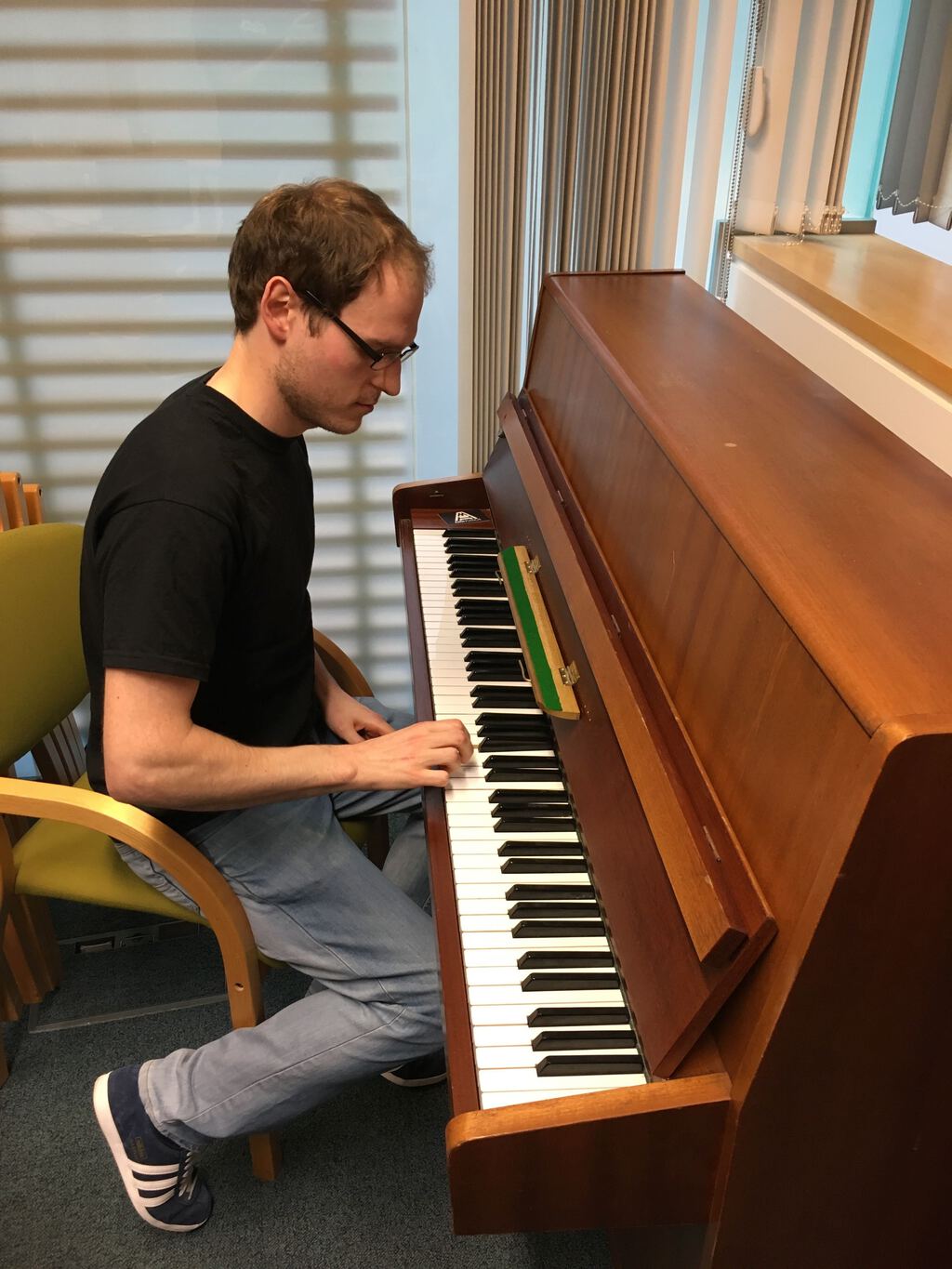
After some obligatory faffing with HDMI cables and USB-C dongles, we began to review what the club had been up to both inside and outside of our recent meetings on raytracing, initially based on Matt Pharr, Wenzel Jakob and Greg Humphreys' "Physically Based Rendering: From Theory To Implementation" (PBRT).
In @leocassarani's absence, @tomstuart showed us the club's first attempt at a raytracer: Raymond and Tom's fork of it with a minimap. We recapped that this was based on our reading of the introduction from the book and featured a few fundamental concepts:
- The eye
- The film
- The camera
- Light sources
- Spheres
- The scene
We heard that the club had since gone on to mob a new raytracer called "raze" which formed the basis of all subsequent experiments including implementing reflections and materials with different reflective properties.
With that, @tuzz took to the screen and ran us through the various projects he had built along the way.
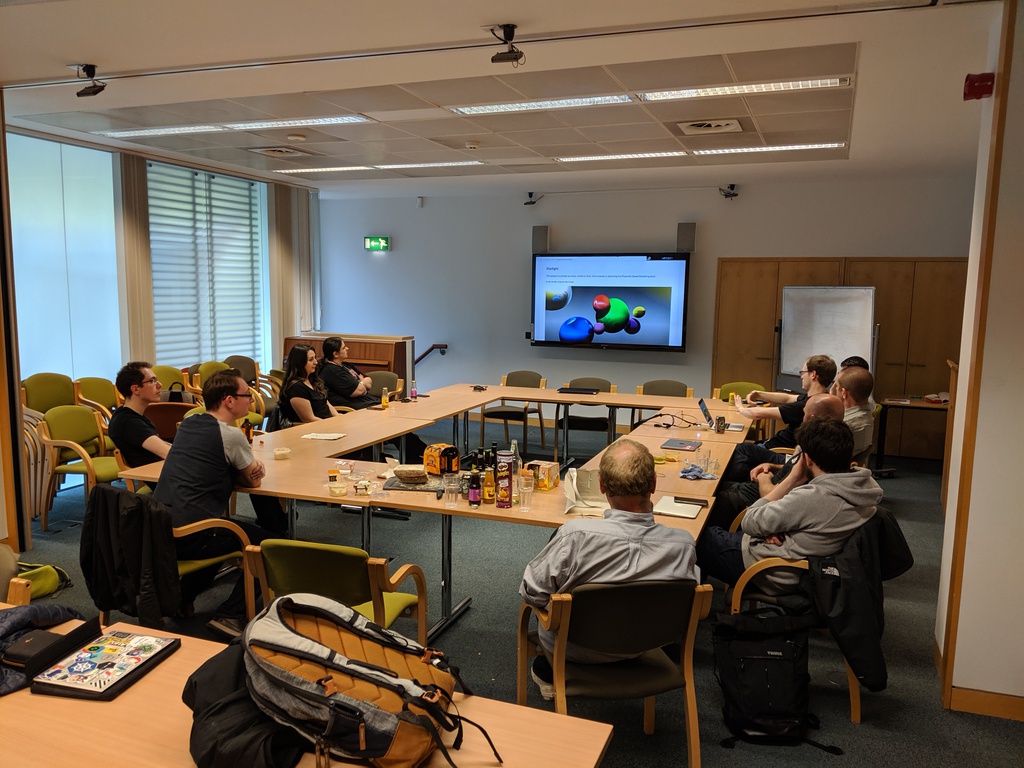
He began with a faithful translation of the book's pbrt program in Rust called ray-tracer. He explained how he had used this to improve his idiomatic Rust knowledge but also to try to remain close to the book's implementation. He highlighted his implementation of typed vectors of various sizes as something he was keen to explore in Rust.
However, having been dazzled by @leocassarani's more visual efforts, @tuzz then switched to implementing a ray tracer in Rust called "Starlight" which produced some mightily shiny scenes:
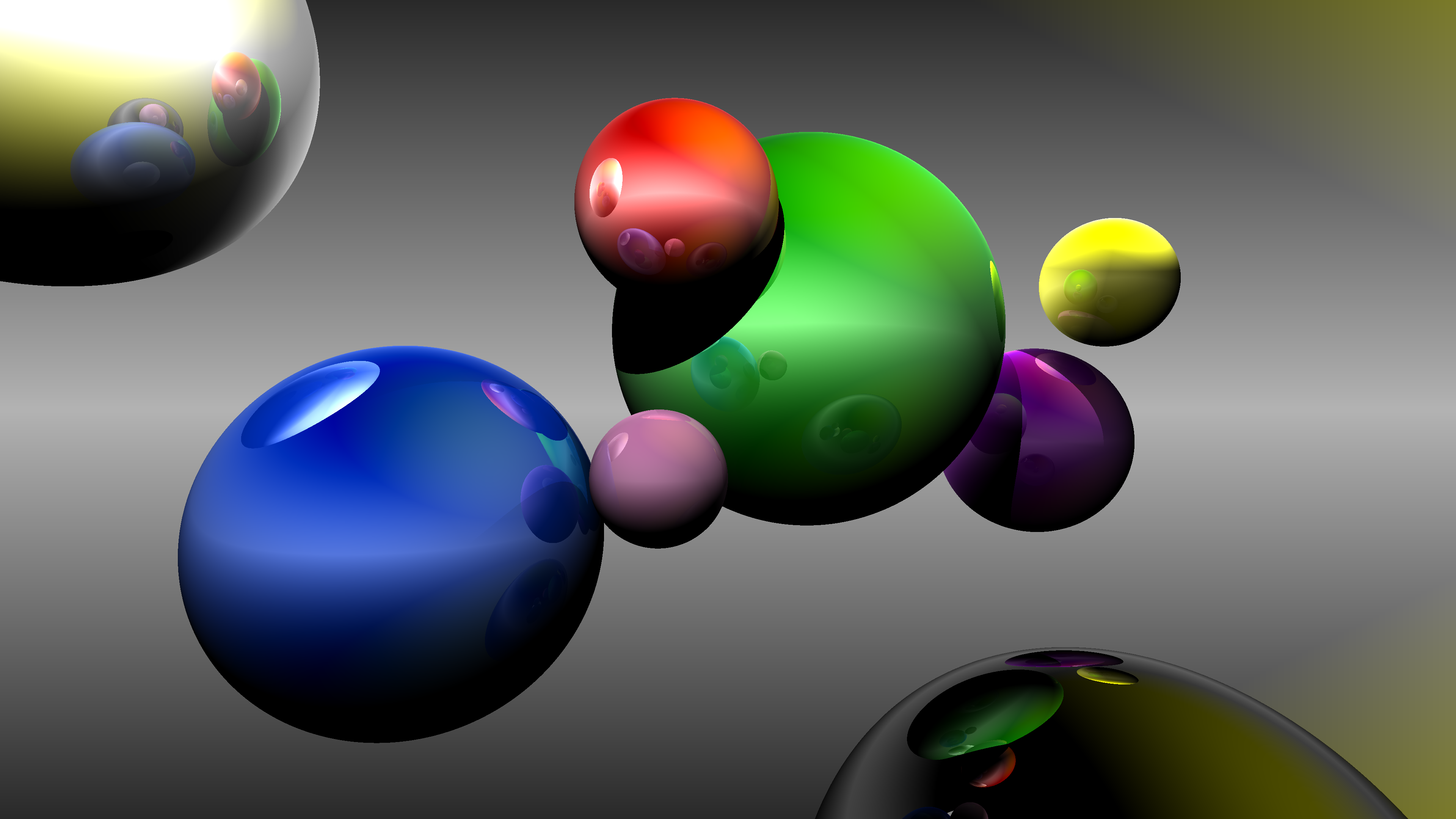
@tuzz explained that he implemented reflections based on his understanding of the book but that the book's treatment was extremely dense so his implementation involved some guesswork.
He then moved on to build another ray tracer based on the Entity component system pattern called "Moonlight" using the Rust ECS library Specs. We briefly touched on the RustConf 2018 keynote by Catherine West on this topic.
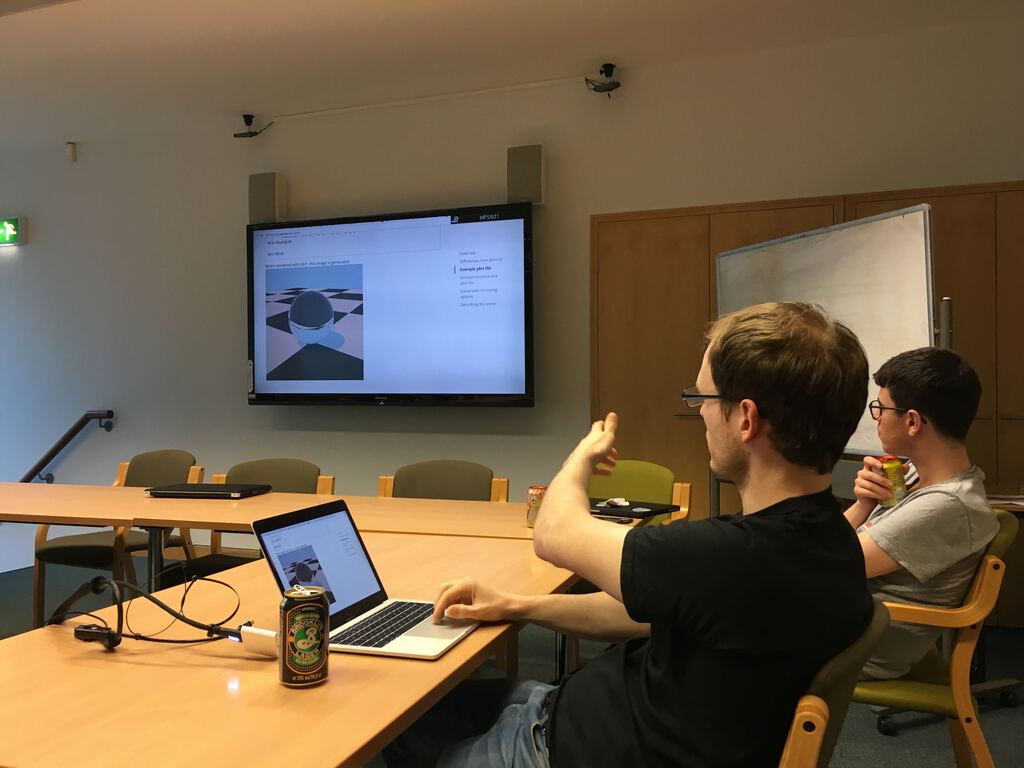
Still not done with raytracing, @tuzz then switched to building tooling around the book's pbrt program and wrote a Ruby gem called pbrt to write pbrt input files using a Ruby DSL.
Finally, @tuzz discussed his experimental Ruby framework "Vivid" which wraps pbrt and allows users to describe animated 3D scenes in Ruby and render them into videos, e.g. Triforce and sphere fly-by. He then wowed us with a special animation for the club based on the Game of Life set to some techno music; needless to say, we were stunned.
@urbanautomaton then showed us his ray tracer in Rust, "raygrass" and how he'd taken the club's mobbed implementation and added anti-aliasing to reduce the Moiré effect in reflections.
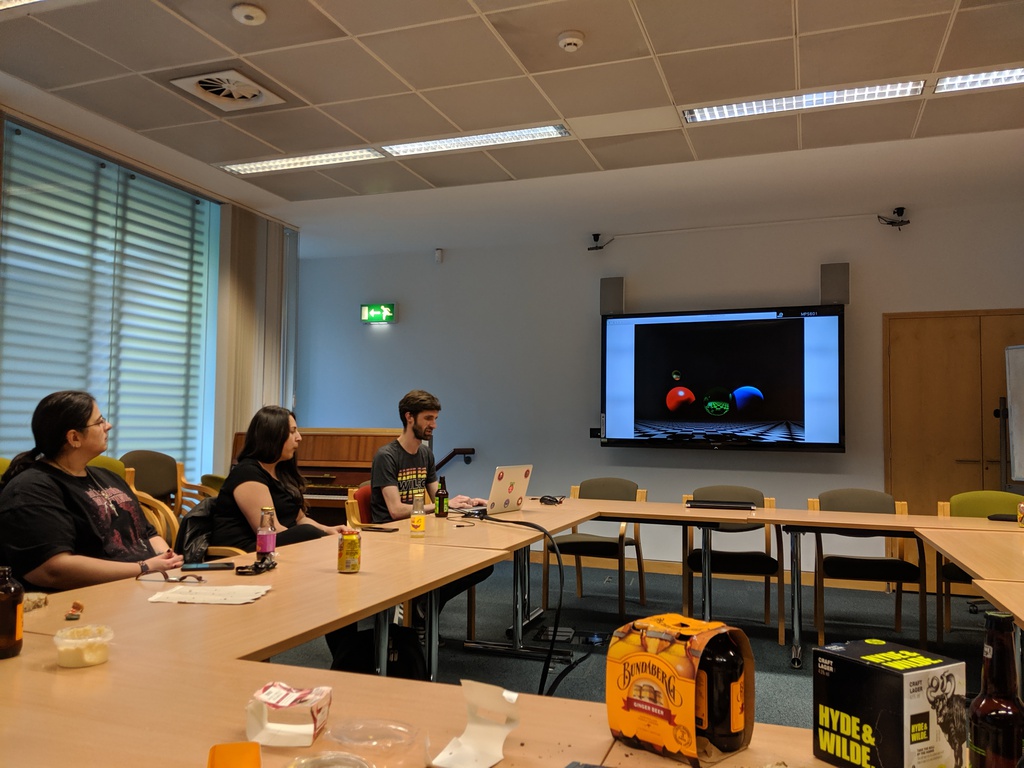
He said that he had based his implementation of reflections on Peter Shirley's "Ray Tracing in One Weekend" but that this seemed incompatible with the approach taken by PBRT.
With raytracing fresh in our minds, we then suggested potential new topics for the club to tackle together:
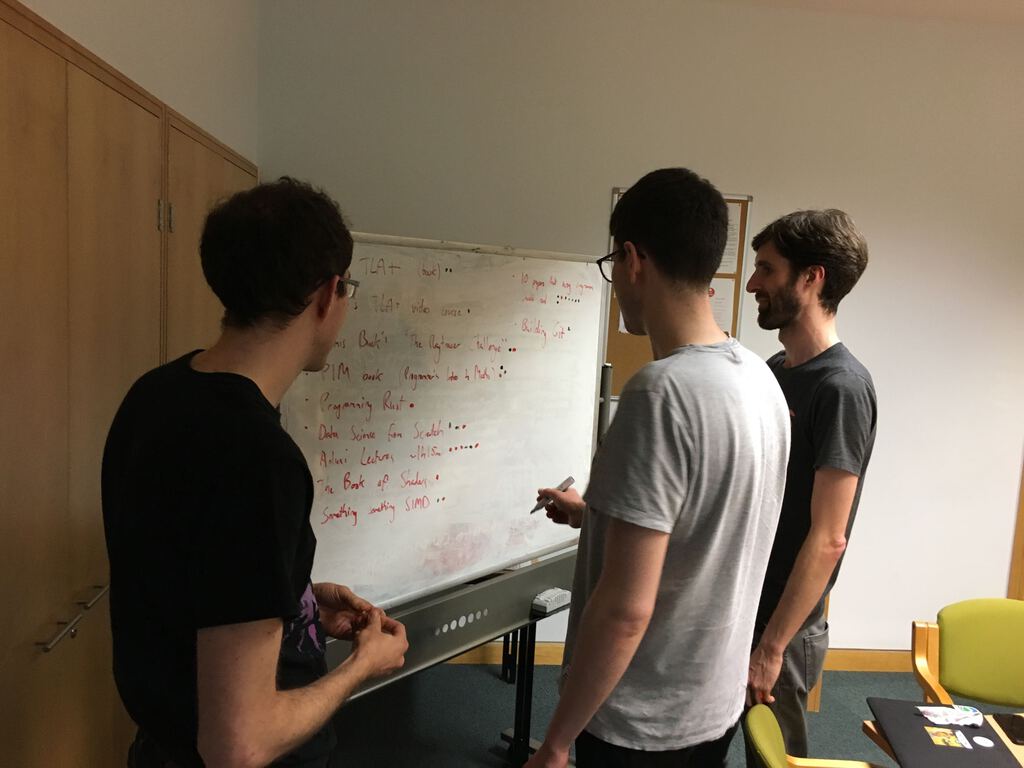
- Hillel Wayne's "Practical TLA+"
- Leslie Lamport's "The TLA+ Video Course"
- Jamis Buck's "The Ray Tracer Challenge"
- Jeremy Kun's "A Programmer's Introduction to Mathematics"
- Steve Klabnik and Carol Nichols' "The Rust Programming Language"
- Joel Grus' "Data Science from Scratch"
- The ADUni Video Lectures
- Patricio Gonzalez Vivo and Jen Lowe's "The Book of Shaders"
- Something to do with SIMD (due to Mison)
- Michael Fogus' "10 Technical Papers Every Programmer Should Read (At Least Twice)"
- James Coglan's "Building Git"
After sharing reservations about learning a programming language together after not enjoying "7 More Languages in 7 Weeks" and that choosing @jcoglan's "Building Git" might make it awkward for him to attend the club, we voted!
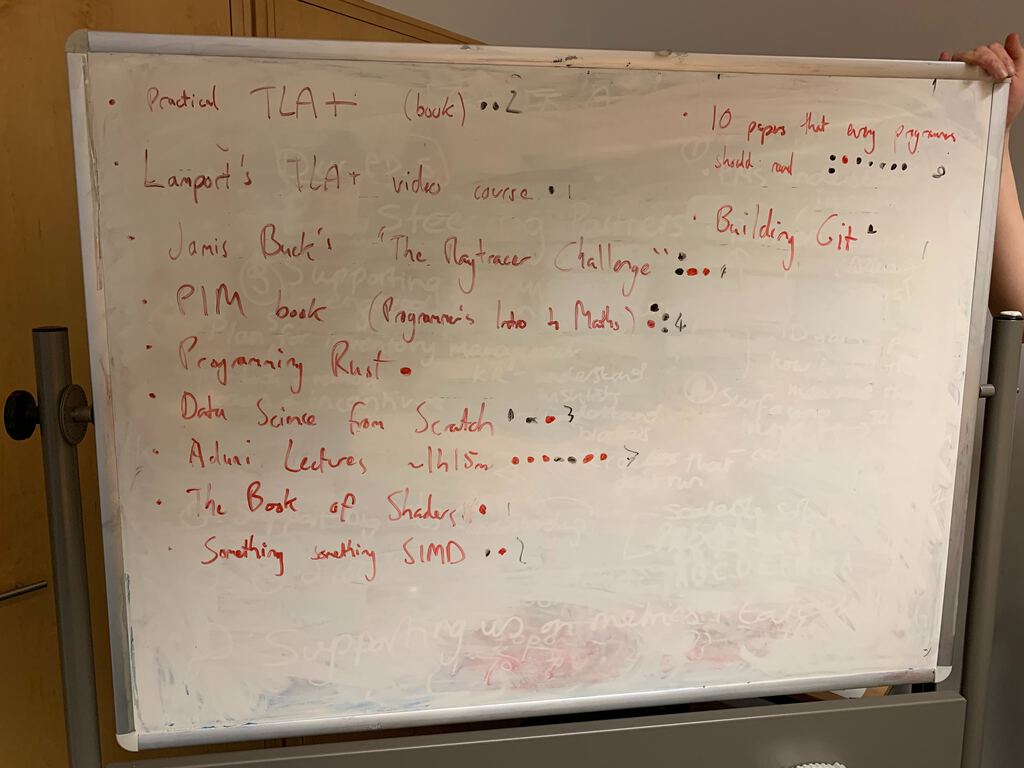
The winner was Michael Fogus' "10 Technical Papers Every Programmer Should Read (At Least Twice)" with 8 votes with the ADUni Video Lectures in close second place with 7 votes.
We decided it would be best if @tuzz and @mudge went away and picked an ideal ADUni lecture and one of Fogus' recommended papers respectively for the club to start with and we would decide which to go with on Slack.
And with that (and some hasty tidying away of breadcrumbs), we were done!
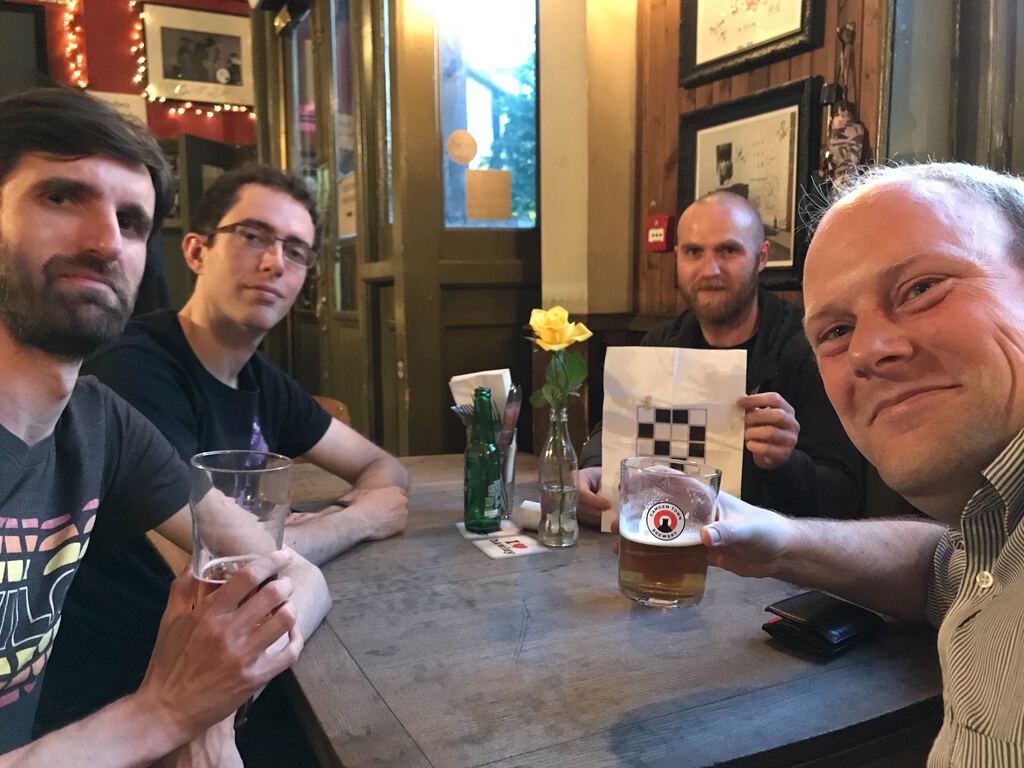
Thanks to @tomstuart, @urbanautomaton and FutureLearn for hosting the meeting and providing drinks and bread; thanks to all who brought dips and snacks and thanks to @tomstuart, @tuzz and @urbanautomaton for demoing their work.
- Home
- Documentation
- Choosing a Topic
- Shows & Tells
- Miscellaneous
- Opt Art
- Reinforcement Learning: An Introduction
- 10 Technical Papers Every Programmer Should Read (At Least Twice)
- 7 More Languages in 7 Weeks
- Lua, Day 1: The Call to Adventure
- Lua, Day 2: Tables All the Way Down
- Lua, Day 3
- Factor, Day 1: Stack On, Stack Off
- Factor, Day 2: Painting the Fence
- Factor, Day 3: Balancing on a Boat
- Elm, Day 1: Handling the Basics
- Elm, Day 2: The Elm Architecture
- Elm, Day 3: The Elm Architecture
- Elixir, Day 1: Laying a Great Foundation
- Elixir, Day 2: Controlling Mutations
- Elixir, Day 3: Spawning and Respawning
- Julia, Day 1: Resistance Is Futile
- Julia, Day 2: Getting Assimilated
- Julia, Day 3: Become One With Julia
- Minikanren, Days 1-3
- Minikanren, Einstein's Puzzle
- Idris Days 1-2
- Types and Programming Languages
- Chapter 1: Introduction
- Chapter 2: Mathematical Preliminaries
- Chapter 3: Untyped Arithmetic Expressions
- Chapter 4: An ML Implementation of Arithmetic Expressions
- Chapter 5: The Untyped Lambda-Calculus
- Chapters 6 & 7: De Bruijn Indices and an ML Implementation of the Lambda-Calculus
- Chapter 8: Typed Arithmetic Expressions
- Chapter 9: The Simply-Typed Lambda Calculus
- Chapter 10: An ML Implementation of Simple Types
- Chapter 11: Simple Extensions
- Chapter 11 Redux: Simple Extensions
- Chapter 13: References
- Chapter 14: Exceptions
- Chapter 15: Subtyping – Part 1
- Chapter 15: Subtyping – Part 2
- Chapter 16: The Metatheory of Subtyping
- Chapter 16: Implementation
- Chapter 18: Case Study: Imperative Objects
- Chapter 19: Case Study: Featherweight Java
- The New Turing Omnibus
- Errata
- Chapter 11: Search Trees
- Chapter 8: Random Numbers
- Chapter 35: Sequential Sorting
- Chapter 58: Predicate Calculus
- Chapter 27: Perceptrons
- Chapter 9: Mathematical Research
- Chapter 16: Genetic Algorithms
- Chapter 37: Public Key Cryptography
- Chapter 6: Game Trees
- Chapter 5: Gödel's Theorem
- Chapter 34: Satisfiability (also featuring: Sentient)
- Chapter 44: Cellular Automata
- Chapter 47: Storing Images
- Chapter 12: Error-Correcting Codes
- Chapter 32: The Fast Fourier Transform
- Chapter 36: Neural Networks That Learn
- Chapter 41: NP-Completeness
- Chapter 55: Iteration and Recursion
- Chapter 19: Computer Vision
- Chapter 61: Searching Strings
- Chapter 66: Church's Thesis
- Chapter 52: Text Compression
- Chapter 22: Minimum spanning tree
- Chapter 64: Logic Programming
- Chapter 60: Computer Viruses
- Show & Tell
- Elements of Computing Systems
- Archived pages